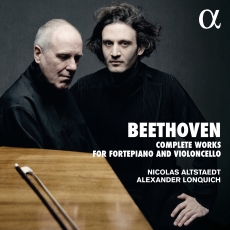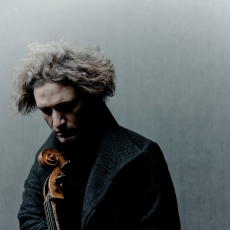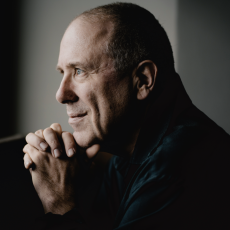Nicolas Altstaedt & Alexander Lonquich - Beethoven: Complete Works for Fortepiano and Violoncello - Gramophone
For this new recording of Beethoven’s music for cello and keyboard, Nicolas Altstaedt plays on a gut-strung Guadagnini cello from 1749 and Alexander Lonquich on a Viennese fortepiano from 1826 or 1827. Not that this necessarily signifies anything, of course – there have been ‘period’ accounts of these pieces before now, from Wispelwey and Isserlis among others. But I’ve heard few recorded performances of this music (and specifically the sonatas) in which the instrumental sonority seems to inform the interpretations quite so distinctively. It’s unpredictable, sometimes startling, and yet at the same time wholly appropriate to the quicksilver mood swings and constant sonic surprises of these experimental works.
Lonquich’s fortepiano has a particularly warm and agreeable tone without any lack of attack. Altstaedt’s sweet upper register yields before the keyboard’s brilliant right-hand figuration but his bass notes supply the resonance and depth that the fortepiano can’t deliver. In other words, we really do hear the slightly unstable partnership of equals that so engaged Beethoven’s imagination. There’s a good bit of power in reserve too – the resonance and bite of their joint fortissimo chords might make you jump. Alpha Classics captures the pair in a clear and attractive chamber acoustic.
But that’s just the baseline. It’s what Altstaedt and Lonquich do with all this sonic potential that fascinates me, and continued to fascinate me as the cycle progressed. The pair are flexible about tempos, with a tendency to accelerate that’s particularly well suited to the theatricality and youthful bravura of the two Op 5 Sonatas. Altstaedt isn’t dogmatic about vibrato or portamento. The soft upwards slide with which he opens Op 69 feels as if he’s summoning this great work (surely the cello’s own KreutzerSonata?) out of the darkness of his lower strings.
I found this performance utterly compelling: the mystery and playfulness of the first movement, the mordant Scherzo and the headstrong, joyous sweep of the finale. In Op 102, all of these qualities come into play: a sense of improvisation matched by an impulsive, sometimes aggressive energy that is somehow entirely of a piece with the tender, concentrated profundity that both players find in the slow movements of these two works. The three sets of variations are just as fresh, just as poetic and just as delightful. If you already have the Gramophone Award-nominated Guy/Phillips modern-instrument set, this recording would nicely complement it. I don’t think you’ll tire of either in a hurry.


